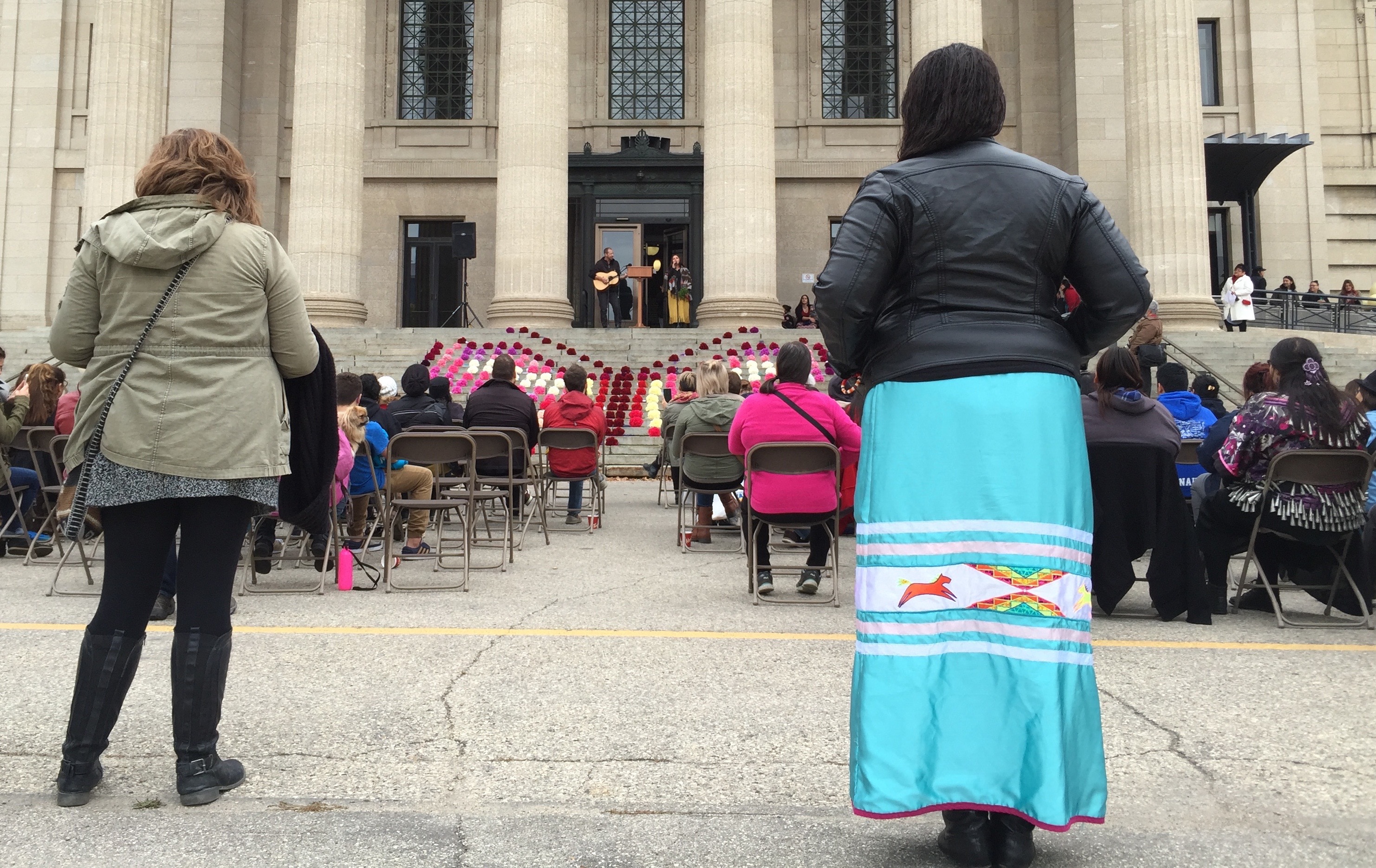Podcast: Play in new window | Download

A rally on the steps of the Manitoba Legislature October 4th called attention to the 1,200 Missing and Murdered Indigenous Women. Canada’s election day is October 19 and many Native groups are hoping a strong turnout will result in a national investigation and proposed solutions.
This is Trahant Reports. A similar story was told across Canada this weekend: Too many Native women have gone missing or have been murdered.
In Winnipeg, one event organizer, Hilda Anderson-Pyrz, put it this way:
“As well as Aboriginal women, Indigenous women and girls we all deserve to be loved and valued and to feel safe. That we shouldn’t have to live in a society and worry about if we’re next. If we are going to be next to be murdered or to go missing. We need to feel safe. It’s our right to feel safe. ”
So on the steps of the Manitoba Legislature many rows of bouquets — shaped as a butterfly. Each flower a reminder of of so many loved ones who have been victims at of violence.
This is the tenth year of vigils; a tragedy that’s compounded by how little has changed since the movement began.
In a few days Canada will elect a new government. The hope is that through the ballot box the issue of missing and murdered Indigenous women and girls will take on new importance — and at the very least there will be a serious national inquiry.
Three of the four major political parties have agreed that there should be a major investigation and solutions put forward to the end epidemic of violence. But the party that said “no” is the current government led by Prime Minister Stephen Harper. Indeed some have called the Harper years a “war” on First Nations because of his emphasis on resource extraction and budget cuts that disproportionately impact native communities.
Prominent Aboriginal Canadians from musician and broadcaster Wab Kinew to the new Mrs. Universe, Ashley Callingbull, have urged Native people to turn out and vote. Perry Bellegarde, grand chief of the Assembly of First Nations, recently told the CBC that he will vote in this election, ending his long time practice of abstention so that a new government might close the “gap between First Nations people and Canadians.”
Aboriginal Canadians are a higher percentage of the population than voters in the states — representing 4.3 percent of the country’s population.
All four major parties have Native candidates running for parliament. According to the nonpartisan IndigiPoll: Twenty-two Native people are standing for office representing the New Democrats, 18 as Liberals, 9 as Greens and 5 conservatives. In a parliamentary form of government, the parties elect the national leader.
One concern about this election is a new voter law that may make it difficult for First Nations residents. The law requires two forms of identification, including one with an address and that’s a thorny problem when many reserves do not have street names.
Canada’s election is October 19th.
One election in Canada (or the US for that matter) won’t automatically improve lives. But it can be a way to turn out a government that’s been hostile to Native issues. And at least start the framework for a better structure.
I am Mark Trahant reporting from Winnipeg, Manitoba.


